Nature Therapy for Building Resilience: Reconnecting With the Healing Power of the Earth
Introduction
Modern life pulls us away from nature more than ever before — long workdays, artificial light, and hours spent in front of screens. Yet, the human body and mind evolved in constant interaction with natural environments: forests, rivers, sunlight, wind, and soil. 🌞
When we lose that connection, our stress levels rise, our emotional resilience weakens, and our sense of belonging fades. Nature therapy, sometimes called ecotherapy or green therapy, restores that essential bond — helping you rebuild emotional strength, regulate your nervous system, and rediscover calm.
This article explores how immersing yourself in nature improves mental and physical health, the science behind it, and practical ways to integrate nature therapy into your life to strengthen resilience — body, mind, and spirit. 🌱
Looking for supplements for Resilience? Click here.
🌳 What Is Nature Therapy?
Nature therapy is an umbrella term for therapeutic practices that intentionally use interaction with nature to improve mental and physical health. It’s not simply “going for a walk.” It’s purposeful reconnection — a mindfulness-based experience that activates your senses and cultivates presence.
Forms of nature therapy include:
Forest bathing (Shinrin-yoku) 🌲 — immersing yourself in the sights, smells, and sounds of a forest.
Ecopsychology 🧠 — exploring your emotional connection with the Earth through reflection and guided therapy.
Gardening therapy (Horticultural therapy) 🌼 — working with plants to reduce anxiety and enhance purpose.
Animal-assisted therapy 🐴 — connecting with animals to build trust and compassion.
Adventure or wilderness therapy 🏞️ — combining physical challenge and nature exposure for personal growth.
Regardless of form, all nature therapy shares one goal: to restore harmony between human biology and the natural world — a harmony essential for true resilience.
🌤️ The Science Behind Nature’s Healing Power
Nature affects the body and brain in measurable ways. Dozens of studies show that natural environments lower stress hormones, stabilize mood, and enhance immune function.
Reduces Cortisol and Stress Hormones
When you spend time outdoors, your cortisol (the primary stress hormone) naturally decreases. Studies show that just 20–30 minutes in nature can significantly lower cortisol levels, heart rate, and blood pressure.
👉 Why this matters: Lower cortisol = more emotional stability and better focus under pressure.
Activates the Parasympathetic Nervous System
Natural settings — the sound of wind, water, or rustling leaves — activate the body’s rest-and-digest mode. This physiological state helps you recover from chronic stress and anxiety.
🌿 Nature literally “tells” your nervous system that you’re safe.
Boosts Serotonin and Dopamine
Sunlight triggers serotonin production — the mood-lifting neurotransmitter often targeted by antidepressants. Physical activity outdoors also raises dopamine, improving motivation and pleasure.
🌞 Sunlight + movement = natural antidepressant.
Improves Immune Function
Plants release phytoncides — antimicrobial compounds that protect trees and boost human immune function when inhaled. Studies from Japan show that forest bathing increases natural killer (NK) cell activity, which enhances immune defense.
💪 Spending time in forests literally strengthens your body’s ability to fight illness.
Enhances Cognitive Function and Creativity
Nature restores directed attention, the mental resource drained by multitasking and screen exposure. Just a walk in a park has been shown to improve memory and creativity by up to 50%.
🌳 When you unplug outdoors, your brain resets.
Encourages Mindfulness and Presence
The sensory richness of natural environments — birdsong, breeze, sunlight on your skin — draws you into the present moment effortlessly. That’s why nature therapy pairs beautifully with mindfulness and breathwork.
“In every walk with nature, one receives far more than he seeks.” — John Muir 🌲
🌺 Emotional Resilience: Nature’s Hidden Lesson
Resilience isn’t about never breaking down — it’s about bouncing back stronger. Nature demonstrates this perfectly: after storms, forests regrow; after drought, rivers refill. 🌧️
When you immerse yourself in natural rhythms, you internalize those same principles of renewal and adaptability.
🌱 Nature Teaches Acceptance
The changing seasons remind us that change is natural — growth, decay, rebirth. Accepting life’s cycles reduces emotional resistance and anxiety about loss or uncertainty.
💧 Nature Cultivates Presence
You can’t rush a sunrise or control a wave. Nature teaches surrender and patience — vital traits for emotional resilience.
🌤️ Nature Mirrors Our Inner World
When you slow down in nature, emotions you’ve buried often surface gently — grief, anger, joy. Processing them in a calm environment helps healing occur without judgment.
🌳 Nature Builds Gratitude
Gratitude is one of the most powerful predictors of mental resilience. Being in nature — noticing a flower, bird, or breeze — naturally evokes appreciation and awe.
🌿 The Psychology of Green Spaces
Urban environments overload your brain with sensory input — noise, screens, people, ads. This constant stimulation drains attention and emotional regulation.
Natural environments, by contrast, induce soft fascination — gentle attention that refreshes your mind instead of exhausting it. This concept, part of the Attention Restoration Theory (ART), explains why nature feels mentally restorative.
💚 In other words: nature gives your mind space to breathe.
🌻 Physical Resilience Through Nature
Emotional resilience is deeply tied to physical resilience. Spending time outdoors naturally improves:
Sleep quality 😴 — natural light resets your circadian rhythm.
Energy and stamina 🏃 — mild outdoor exercise improves mitochondrial health.
Immune balance 🧬 — exposure to diverse microbes strengthens your microbiome.
Vitamin D levels 🌞 — sunlight boosts this crucial immune and mood-regulating nutrient.
When your body is balanced, your mind becomes more adaptable — and your ability to handle stress skyrockets.
Looking for supplements for Resilience? Click here.
🌊 Types of Nature Therapy and Their Benefits

Different landscapes have unique healing properties. You can choose what fits your personality and needs best.
🌲 Forest Therapy (Shinrin-yoku)
Best for: Anxiety, overwhelm, creative burnout.
Deep inhalation of forest air reduces cortisol and improves immune markers.
Encourages mindfulness through sensory engagement.
Boosts heart-rate variability (HRV), a key marker of stress resilience.
🪷 Practice tip: Walk slowly in a forest without headphones. Notice textures, colors, and scents.
🌊 Ocean Therapy
Best for: Emotional release and nervous system regulation.
The rhythmic sound of waves mirrors slow breathing, inducing calm.
Sea air contains negative ions that may elevate mood.
Saltwater immersion improves circulation and muscle relaxation.
🏖️ Try “blue mind” meditation — simply sit near water and let the sound guide your breath.
⛰️ Mountain Therapy
Best for: Building strength, perspective, and inner stability.
High-altitude environments stimulate endorphin release.
Expansive views trigger awe, reducing rumination and self-focus.
🌄 Climb or hike regularly — physical effort + vast perspective = confidence boost.
🌻 Gardening Therapy
Best for: Depression, loneliness, purpose renewal.
Touching soil releases Mycobacterium vaccae, a microbe linked to increased serotonin.
Growing plants nurtures a sense of agency and care.
🌷 Start small: even one potted plant can become a daily mindfulness ritual.
🌬️ Wind and Open Sky Exposure
Best for: Creative reset, reducing tension.
Feeling wind or sunlight on your skin grounds your body in the present.
Expansive open spaces help release pent-up emotions.
☁️ Lie on grass and watch clouds for 10 minutes — it’s active meditation.
🌞 The Role of Sunlight in Emotional Resilience
Sunlight is a natural mood stabilizer. It influences serotonin, melatonin, and vitamin D — all critical for emotional regulation.
Morning sunlight (before 10 a.m.) increases alertness and sets your circadian rhythm.
Afternoon light boosts serotonin, helping you stay motivated.
Evening dim light triggers melatonin release, supporting restorative sleep.
🌤️ If you live in a dark climate, consider a light-therapy lamp to mimic sunlight.
🌱 Nature and the Nervous System
Your nervous system constantly scans for safety — a process called neuroception. Natural environments send powerful “safe” signals: rhythmic patterns, gentle light, predictable sounds.
This activates your vagus nerve, shifting your body from fight-or-flight into calm engagement. Over time, this rewires your brain toward greater emotional regulation and resilience.
🪶 That’s why people feel “grounded” after walking barefoot or touching trees — it’s vagal toning in action.
🌾 Combining Nature Therapy With Modern Wellness
You can amplify nature’s effects by pairing it with supportive practices:
💊 Supplements That Enhance Nature’s Benefits
Magnesium Glycinate — calms the nervous system for deeper relaxation outdoors.
Omega-3s — enhance cognitive clarity and mood during nature walks.
Adaptogens (Ashwagandha, Rhodiola) — help you recover faster from physical and emotional stress.
Vitamin D — supports mood and immunity alongside sunlight exposure.
🧘 Breathwork and Mindfulness
Practice slow, rhythmic breathing outdoors. The synergy of oxygen, fresh air, and mindfulness doubles the calming effect.
Example: inhale deeply with the wind, exhale with the sound of rustling leaves. 🌬️
Want to try Breathwork? Click Here.
📖 Reflective Journaling
Write about your observations — not just scenery, but emotions nature brings up. It turns passive observation into active integration.
🧠 Therapy Integration
Many therapists now include ecotherapy — blending traditional talk therapy with nature exposure for trauma healing and emotional regulation.
Looking for online therapy ? Click Here.
🌍 The Concept of “Biophilia”: Why We Need Nature
The Biophilia Hypothesis, popularized by biologist E.O. Wilson, suggests humans are genetically wired to seek connection with nature. It’s part of our survival code.
Urban isolation and screen saturation starve that instinct, leading to anxiety, burnout, and emotional disconnection.
Reconnecting through nature therapy reactivates this innate bond — satisfying a biological need as fundamental as sleep or food. 🌾
🧘 Building a Nature-Based Resilience Routine
Here’s how to make nature therapy part of your daily life — even if you live in a city.
🌅 Morning: Grounding and Energy
Step outside immediately after waking.
Look toward natural light for 5 minutes to anchor your circadian rhythm.
Touch a tree, breathe deeply, or stretch barefoot if possible.
💊 Optional: Take magnesium or adaptogens with water after your morning grounding ritual.
☀️ Midday: Mental Reset
Walk in a park or near greenery for at least 20 minutes.
Pause and observe details: leaves, textures, bird sounds.
If you can’t leave your workspace, keep a living plant or nature photo in sight.
🧘 Combine with slow breathing — inhale for 5, exhale for 5 — to refresh focus and reduce fatigue.
🌇 Evening: Reflection and Calm
Sit outdoors or near a window with sunset light.
Journal three things you noticed in nature today.
Practice gratitude — it amplifies nature’s emotional benefits.
🌙 If you can, end the day with a short moonlight or starlight walk.
🌿 Nature and Trauma Recovery

For people healing from trauma or chronic stress, nature therapy can gently reintroduce a sense of safety in the body.
Predictable natural rhythms (waves, breeze, bird calls) regulate the vagus nerve.
Grounding through touch (bare feet, tree bark, soil) rebuilds somatic awareness.
Being witnessed by nature — the quiet acceptance of the natural world — restores trust in existence itself.
“The Earth has music for those who listen.” — Shakespeare 🌏
🪶 The Power of Awe in Nature
Awe — that spine-tingling feeling of vastness and wonder — is more than poetic. It’s a proven resilience booster.
Research shows that awe:
Reduces inflammatory markers.
Expands your sense of time and perspective.
Decreases ego-focused rumination.
Enhances prosocial emotions like gratitude and compassion.
Standing before mountains, gazing at stars, or watching lightning storms engages this “awe network” in your brain, reminding you that you are part of something infinitely larger. 🌌
🌎 Digital Detox: Replacing Screens with Sky
Screens hijack your attention and flood your brain with dopamine spikes — short bursts of stimulation without restoration.
Nature, on the other hand, offers slow dopamine — gentle, sustainable pleasure that stabilizes mood.
Try:
“Sunrise before screens” 🌅 — step outside before checking your phone.
“Green breaks” 🌿 — replace scrolling with short park walks.
“Sky gazing” ☁️ — look up for 2 minutes every hour.
Within days, you’ll notice your mood lift and focus improve naturally.
🧭 Reconnecting with Meaning
When you immerse yourself in the natural world, you remember something essential: you belong.
That sense of belonging nurtures spiritual resilience — the deep knowing that life moves in cycles, that storms pass, that growth is inevitable.
Even small acts — watering a plant, watching rain, feeling soil — remind you that resilience isn’t a trait you force; it’s a rhythm you rejoin. 🌿
🌺 Practical Steps to Begin
Schedule nature time like an appointment. Treat it as sacred, not optional.
Engage your senses. Hear, see, touch, smell, taste your environment consciously.
Practice grounding. Stand barefoot, breathe deeply, feel gravity support you.
Reflect afterward. Ask yourself: “What emotion did nature mirror today?”
Combine with wellness habits. Supplements, mindfulness, or light exercise amplify results.
Consistency matters more than duration. Even 10 minutes a day outdoors can rewire your stress response.
💚 Long-Term Benefits of Nature Therapy
Regular engagement with nature cultivates:
Lower chronic stress markers (cortisol, inflammation).
Better sleep and hormonal balance.
Improved self-esteem and body awareness.
Greater emotional regulation and empathy.
Enhanced meaning and life satisfaction.
Essentially, nature therapy doesn’t just help you feel better — it changes how your nervous system functions.
Over time, you respond to challenges not with panic, but with presence. 🌲
🌿 Final Thoughts: Nature as Your Resilience Teacher
In a world obsessed with control and productivity, nature invites surrender and renewal. The forest doesn’t rush. The ocean doesn’t worry. The mountains don’t doubt their strength.
When you align with those natural rhythms, your resilience stops being forced — it becomes organic.
So step outside. Breathe deeply. Feel sunlight on your face, soil under your feet, wind through your hair. Let the Earth remind you what calm feels like.
Because nature isn’t just a place to visit.
It’s a mirror of your own capacity to heal, grow, and thrive. 🌍💚
📚 References
Bratman, G. N., et al. (2015). Nature experience reduces rumination and subgenual prefrontal cortex activation. Proceedings of the National Academy of Sciences.
Li, Q. (2010). Effect of forest bathing trips on human immune function. Environmental Health and Preventive Medicine.
Ulrich, R. S. (1984). View through a window may influence recovery from surgery. Science, 224(4647), 420–421.
Kaplan, S. (1995). The restorative benefits of nature: Toward an integrative framework. Journal of Environmental Psychology.
Berman, M. G., et al. (2008). The cognitive benefits of interacting with nature. Psychological Science.
McEwen, B. S. (2007). Physiology and neurobiology of stress and adaptation. Physiological Reviews.
Kellert, S. R., & Wilson, E. O. (1993). The Biophilia Hypothesis. Island Press.
Joye, Y., & van den Berg, A. E. (2011). Is love for green in our genes? Frontiers in Psychology.
Pritchard, A., et al. (2020). The effect of awe on resilience and well-being. Journal of Positive Psychology.
White, M. P., et al. (2019). Spending at least 120 minutes a week in nature is associated with good health and well-being. Scientific Reports.
Related Posts
-
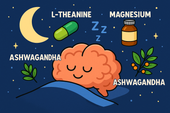
Nootropics That Promote Calm and Rest
Explore the world of calming nootropics — natural brain enhancers that promote relaxation, better focus, and deeper rest. Learn how L-Theanine, magnesium, ashwagandha, and other adaptogens help balance your nervous system, reduce stress, and support restorative sleep.
-

Best Natural Supplement Stack for Sleep
Discover the best natural supplement stack for deep, restorative sleep. Learn how nutrients like magnesium, L-theanine, glycine, and calming herbs such as chamomile and ashwagandha work together to relax your body, calm your mind, and improve sleep quality—naturally and safely.
-
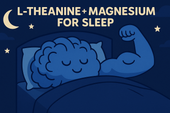
Combining L-Theanine and Magnesium for Sleep: A Calm Night, Naturally
Discover how combining L-Theanine and Magnesium can help you drift into deep, restorative sleep. Learn how this natural duo calms the mind, relaxes the body, and supports your nervous system—without grogginess the next morning.
-

How to Sleep Better After Intense Workouts
Struggling to fall asleep after a tough workout? Learn how to optimize your post-training recovery with nutrition, hydration, and science-backed sleep strategies. Discover how to calm your nervous system, balance hormones, and wake up fully recharged for your next session.
-
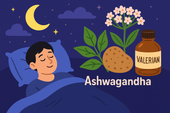
Ashwagandha and Valerian: A Bedtime Combo for Deep Rest and Emotional Reset
Discover the calming synergy of Ashwagandha and Valerian root, two natural sleep aids that help quiet the mind, ease anxiety, and promote deeper rest. Learn how this herbal duo supports the nervous system, balances stress hormones, and restores emotional peace — without next-day grogginess.
-

How to Create a Resilience-Boosting Diet
Discover how to build emotional and physical strength from the inside out with a resilience-boosting diet 🍎. Learn which foods stabilize your mood, how supplements like magnesium and omega-3s strengthen your stress response, and why pairing nutrition with breathwork and therapy creates lasting calm, focus, and vitality 🌿💪.
-

Best Teas and Herbal Blends for Calmness: Nature’s Way to Restore Inner Peace
Ashwagandha, the ancient adaptogenic herb, helps your body find balance during stress. Known as “Indian ginseng,” it supports cortisol regulation, boosts energy, and restores calm clarity. Discover how this powerful root promotes resilience, emotional balance, and steady vitality — one cup at a time. 🌸
-

Parenting and Emotional Strength: How to Raise Children Without Losing Yourself
Empathy is the bridge that connects hearts — the quiet power to understand, feel, and support another’s emotions without judgment. Learn how empathy strengthens relationships, enhances communication, and cultivates deeper compassion in everyday life. 🌿
-
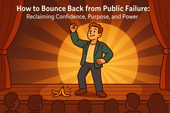
How to Bounce Back from Public Failure: Reclaiming Confidence, Purpose, and Power
Visualization is more than imagination — it’s brain training for resilience. By picturing calm, success, or healing, you activate the same neural pathways as real experience. Learn how daily visualization rewires your brain for confidence, emotional balance, and recovery from stress. ✨
-

Coping with Financial Stress Through Resilience: How to Stay Grounded When Money Feels Tight
Body awareness is the foundation of emotional resilience. By tuning into your body’s signals — tension, fatigue, or calm — you learn to recognize stress before it overwhelms you. Discover how mindfulness, gentle movement, and breathwork can deepen your connection with your body and restore balance from the inside out. 🧘
-

How to Stay Positive During Chronic Illness: A Guide to Emotional Strength and Hope
Creativity is more than art — it’s a form of healing. Whether through painting, writing, music, or small acts of expression, creativity helps release emotion, calm the nervous system, and reconnect you to joy. Discover how to use creativity as a tool for emotional balance, resilience, and self-discovery. 🌿
-
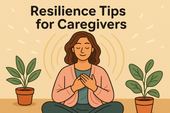
Resilience Tips for Caregivers: How to Stay Strong While Caring for Others
Joy isn’t the absence of pain — it’s the quiet strength to find light even in challenging times. Cultivating joy through small daily moments restores balance, releases stress, and reminds you of life’s beauty. Learn how to reconnect with authentic happiness, rebuild emotional energy, and nurture your nervous system through gratitude, presence, and play. 🌿
-

Building Resilience After a Breakup: How to Heal, Rebuild, and Rise Stronger
Social connection is one of the strongest predictors of emotional resilience. During difficult times, genuine relationships act as anchors — calming the nervous system, reducing stress hormones, and helping you regain perspective. Learn how cultivating real human connection can strengthen your mind, heart, and overall well-being. 🌿
-
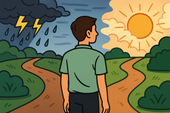
How to Stay Emotionally Strong During Job Loss
Your emotions are powered by brain chemistry — a delicate balance of neurotransmitters like serotonin, dopamine, and cortisol. When these chemicals work in harmony, you feel calm, focused, and resilient. Learn how daily habits, nutrition, and mindfulness can support your brain chemistry and boost emotional well-being naturally. 🌿
-
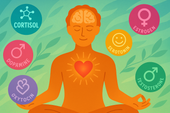
The Role of Hormones in Emotional Stability: How Your Chemistry Shapes Your Calm
Hormones shape more than your body — they shape your emotions, resilience, and sense of calm. From cortisol to serotonin, these chemical messengers influence how you react to stress, connect with others, and recover from challenges. Learn how to balance your hormones naturally to build lasting emotional stability and harmony within. 💫
-
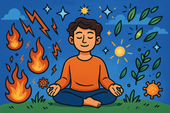
Mitochondria and Emotional Energy: The Cellular Power Behind Your Mood
Breathwork is one of the most powerful tools for emotional regulation and cellular balance. Through intentional breathing, you can calm your nervous system, increase oxygen flow to the brain, and even support mitochondrial energy. Learn how conscious breathing connects body and mind — transforming stress into presence and emotional strength. 🌿
-
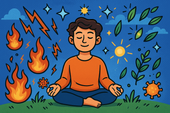
Inflammation and Its Impact on Mood Resilience: The Silent Link Between Body and Mind
Inflammation doesn’t just affect the body — it impacts the mind. Chronic inflammation alters brain chemistry, depletes serotonin, and makes emotional recovery harder. Learn how calming inflammation through nutrition, mindfulness, and sleep can restore balance, resilience, and a renewed sense of emotional strength. 💫
-
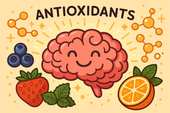
How Antioxidants Protect Emotional Well-being: The Hidden Link Between Oxidative Stress and Mental Health
Antioxidants do more than protect your body — they defend your mind. By neutralizing oxidative stress, antioxidants support serotonin, dopamine, and brain energy pathways that keep you calm, focused, and emotionally balanced. Discover how foods like berries, green tea, and dark chocolate nourish your brain, boost mood, and strengthen resilience from the inside out. 🌿✨
-
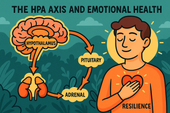
The HPA Axis and Emotional Health: The Hidden Bridge Between Stress and Mind
Neuroplasticity — the brain’s ability to rewire and adapt — is the foundation of emotional healing and resilience. When you face stress, trauma, or change, your neural pathways can reshape themselves to support new patterns of calm, focus, and self-awareness. Learn how daily practices like mindfulness, therapy, and breathwork strengthen neuroplasticity to transform emotional pain into personal growth. 🌸
-
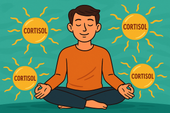
Why Cortisol Control Is Key to Resilience: Mastering Stress to Build Emotional Strength
Controlling cortisol — the body’s main stress hormone — is the secret to lasting resilience. When cortisol levels stay balanced, your mind becomes clearer, emotions steadier, and energy more sustainable. Learn how breathwork, mindset shifts, adaptogens, and daily rhythms can help you calm your stress response and build true inner strength. 🌞💪
-
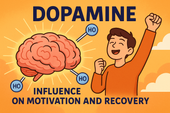
Dopamine’s Influence on Motivation and Recovery: Reigniting Drive and Balance
Healthy relationships are the foundation of emotional balance and resilience. Whether romantic, familial, or platonic, genuine connection releases dopamine, serotonin, and oxytocin — the brain’s “bonding trio” — helping us feel secure, motivated, and seen. Learn how trust, empathy, and communication not only strengthen your connections but also reshape your nervous system for deeper emotional well-being. 🌿🤝
-
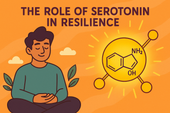
The Role of Serotonin in Resilience: How This “Mood Molecule” Shapes Emotional Strength
Serotonin — often called the “resilience molecule” — plays a vital role in how we handle stress, regulate mood, and recover from emotional challenges. Beyond happiness, this powerful neurotransmitter helps balance the gut-brain axis, stabilize the nervous system, and support emotional flexibility. Learn how nutrition, sunlight, mindfulness, and adaptogens can naturally boost serotonin and strengthen your emotional resilience. 🌞🧠
-
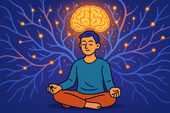
How Neuroplasticity Supports Emotional Growth: Rewiring the Brain for Resilience
Neuroplasticity is the brain’s built-in power to grow, adapt, and heal — and it’s the foundation of emotional transformation. Every mindful breath, compassionate act, or reframed thought strengthens new neural pathways that support resilience and self-awareness. Learn how your brain rewires through daily habits, helping you turn emotional challenges into opportunities for growth and calm. 🌿
-
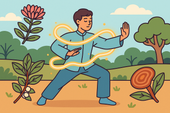
Tai Chi and Adaptogens for Mind-Body Balance: The Art of Harmonizing Energy and Resilience
Alchemy isn’t just an ancient science — it’s a timeless symbol of transformation and inner balance. By blending the physical and spiritual, alchemy teaches us that change begins from within. Just as metals are refined into gold, we too can transmute emotional pain, stress, and chaos into clarity and strength through mindful practice and self-awareness. 🌙✨
-

Cold Therapy and Emotional Control: Training the Mind Through the Body
Cold therapy isn’t just for athletes — it’s a tool for emotional mastery. By exposing your body to controlled cold, you train your nervous system to stay calm under stress, improving focus, mood, and resilience. This article explores the science of cold exposure, its impact on hormones and the vagus nerve, and how ice baths and cold showers can help you build emotional control, one breath at a time. 🧊🧘♂️
-

How Music Influences Emotional Recovery: The Healing Soundtrack of the Mind
Neuroplasticity — the brain’s ability to rewire and heal itself — is at the heart of emotional recovery. Through mindful habits, music, therapy, and consistent mental stimulation, your brain can form new connections that support resilience and well-being. Discover how neuroplasticity turns pain into growth, helping you rebuild balance, focus, and emotional strength. 🌿
-
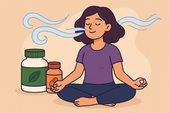
Breathwork Techniques That Pair with Supplements: The Ultimate Synergy for Stress Relief and Mental Clarity
Breathwork and supplements create a powerful mind-body synergy for stress relief, focus, and energy. By combining intentional breathing with adaptogens, nootropics, and calming nutrients, you can naturally regulate cortisol, sharpen mental clarity, and boost emotional balance. This guide explores the best breathwork techniques and supplement pairings to help you feel centered, calm, and energized from the inside out. 🌿
-
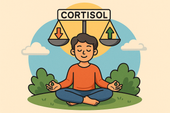
Why Cortisol Balance Matters for Emotional Strength
Balancing cortisol — your body’s main stress hormone — is essential for emotional resilience. When cortisol is chronically high, your mind stays stuck in survival mode, leading to fatigue, anxiety, and emotional instability. This article explores how nutrition, supplements, breathwork, and therapy can help restore healthy cortisol rhythms, regulate the nervous system, and strengthen your ability to handle life’s challenges with calm focus and emotional strength. 🌿
-

Best Supplements for Students During Exam Season: Focus, Energy, and Memory Support
Studying late into the night? Learn which natural supplements can boost focus, memory, and mental stamina during exam season — without the crash. From omega-3s to Bacopa and Rhodiola, discover your brain’s ultimate exam support stack. 🎓🧠
-
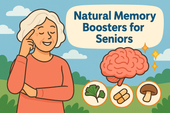
Natural Memory Boosters for Seniors: How to Keep Your Mind Sharp and Focused
Stay mentally sharp and confident as you age. Discover science-backed natural supplements and lifestyle habits that boost memory, focus, and brain longevity for seniors. 🌿🧠
-
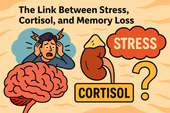
The Link Between Stress, Cortisol, and Memory Loss
Chronic stress can quietly erode your memory — and cortisol is the key culprit. Learn how stress hormones affect the brain, why the hippocampus shrinks under pressure, and how natural strategies can help you restore memory and mental clarity. 🧠✨
-

How to Build a Daily Supplement Routine for Memory Health
Want to sharpen your memory and stay mentally clear? Learn how to build a daily supplement routine for memory health — from morning focus to nighttime brain repair. Discover science-backed nutrients that boost recall, focus, and long-term cognitive resilience. 🧠🌿
-
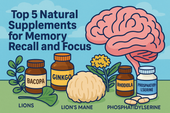
Top 5 Natural Supplements for Memory Recall and Focus
Looking to boost memory and concentration naturally? Discover the top 5 supplements — Bacopa, Ginkgo Biloba, Lion’s Mane, Rhodiola, and Phosphatidylserine — that enhance focus, recall, and long-term brain health. 🧠✨
-
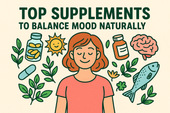
Top Supplements to Balance Mood Naturally
From omega-3s to adaptogens, discover the top natural supplements proven to support emotional balance, reduce stress, and promote inner calm — safely and effectively. 🌿✨
-
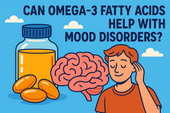
Can Omega-3 Fatty Acids Help with Mood Disorders?
Omega-3 fatty acids do more than support heart health — they can help balance mood, reduce depression, and calm anxiety. Discover how EPA and DHA nourish your brain, fight inflammation, and support emotional well-being from within. 🌊🧠
-

Vitamin D and Mood: The Sunshine Vitamin for Emotional Balance
Could the key to emotional balance be as simple as a little sunlight? Discover how vitamin D — the sunshine vitamin — influences serotonin, reduces inflammation, and helps you feel more positive and resilient year-round. ☀️💛
-

The Role of Magnesium in Reducing Irritability and Low Mood
Feeling on edge or emotionally drained? Magnesium could be the missing link between your body and your mood. Discover how this essential mineral reduces irritability, balances neurotransmitters, and helps your nervous system find calm again. 🌿✨
-
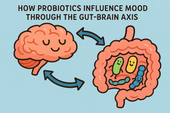
How Probiotics Influence Mood Through the Gut-Brain Axis
Discover how probiotics can do more than support your digestion—they can actually uplift your mood. This article explores the fascinating gut-brain axis and how balancing your gut bacteria through probiotics may help reduce anxiety, improve emotional stability, and support long-term mental well-being. 🌿🧠
-
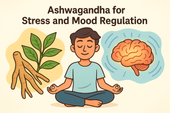
Ashwagandha for Stress and Mood Regulation
Discover how Ashwagandha, the powerful adaptogenic herb 🌿, helps your body manage stress and regulate mood. Learn how it balances cortisol, boosts GABA and serotonin, and supports emotional stability — helping you feel calm, focused, and resilient every day.
-
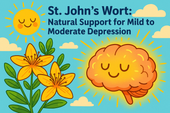
St. John’s Wort: Natural Support for Mild to Moderate Depression
Discover how St. John’s Wort, the “sunshine herb” 🌼, naturally supports mild to moderate depression. Learn how it boosts serotonin, balances mood, and promotes emotional resilience — with research showing its effectiveness compares to antidepressants, but with fewer side effects.
-
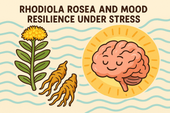
Rhodiola Rosea and Mood Resilience Under Stress
Discover how Rhodiola rosea helps your body adapt to stress 🌿. Learn how this powerful adaptogen balances cortisol, supports serotonin and dopamine, and strengthens emotional resilience — helping you stay calm, focused, and energized under pressure.
-
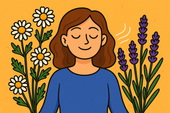
Chamomile and Lavender: Herbal Calm for Emotional Fluctuations
Discover how chamomile and lavender bring calm to emotional ups and downs 🌿. Learn how these two soothing herbs balance your nervous system, ease anxiety, and support restful sleep — naturally helping you find peace and emotional stability.
-
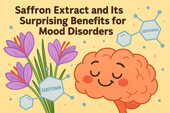
Saffron Extract and Its Surprising Benefits for Mood Disorders
Discover how saffron extract — the golden spice of joy 🌸 — can naturally support mood balance, ease anxiety, and lift mild depression. Learn what science says about its serotonin-boosting power, the ideal dosage, and how this ancient remedy compares to modern antidepressants.
-
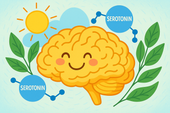
5-HTP and Serotonin: A Natural Path to Lifting Mood
Discover how 5-HTP naturally boosts serotonin 🌞 — the neurotransmitter behind mood, sleep, and emotional balance. Learn how this plant-derived compound supports happiness, reduces anxiety, and improves rest by helping your brain create more serotonin the gentle, natural way.
-
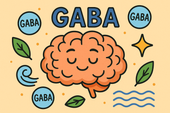
GABA Supplements for Reducing Anxiety and Mood Swings
Discover how GABA supplements can help reduce anxiety and balance mood naturally 🌿. Learn how this calming neurotransmitter works to quiet the mind, ease stress, and improve sleep — plus which nutrients and habits can boost your body’s own GABA production for long-term emotional stability.
-
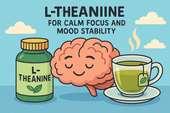
L-Theanine for Calm Focus and Mood Stability
Discover how L-theanine, the calming compound found in green tea 🍵, promotes focus, relaxation, and mood stability. Learn the science behind how it balances neurotransmitters, reduces stress hormones, and enhances clarity — helping you stay centered, calm, and productive without sedation.
-

B Vitamins and Brain Chemistry: Supporting Energy and Emotional Balance
Discover how B vitamins power your brain chemistry ⚡. Learn how B6, B9, and B12 support serotonin, dopamine, and energy production — helping boost focus, mood, and emotional balance. From diet to supplements, explore how this vital nutrient group keeps your mind resilient and your energy steady.
-

N-Acetyl Cysteine (NAC) and Mood Disorders: What the Research Says
Learn how N-Acetyl Cysteine (NAC) supports brain health and mood balance 🧠. Discover how this antioxidant helps reduce oxidative stress, regulate glutamate, and improve emotional stability in depression, bipolar disorder, and anxiety — backed by cutting-edge psychiatric research.
-

Supplements for Bipolar Disorder: What May Support Stability
Discover the best supplements for bipolar disorder 🌿 that may support emotional stability and brain health. Learn how nutrients like omega-3s, magnesium, vitamin D, and NAC can help reduce inflammation, balance neurotransmitters, and complement traditional treatment safely.

















































